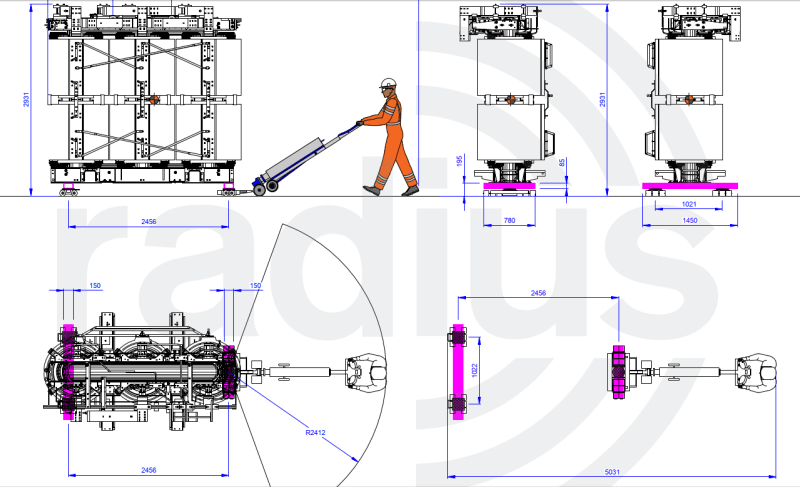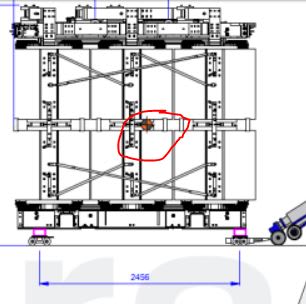Hi All,
I am trying to carry out a calculation for a transportation arrangement of an equipment in a plant room.
The equipment we have is a transformer and it is quite heavy (~11 tonnes).
The proposal from the contractor is to use skates to undertake this. They are proposing to put 2no. skates at the back of the equipment, and 1no. skate at the front, so that someone can divert the machine and bring it to its final position.
My concern is on how to calculate the load using this method. Obviously this like a 3-point system where you have 2no. skates at the back and 1no. bigger skate at the front. I am looking to calculate the force that will be exerted by each skate on the floor. It seems like the distribution is not going to be even due to the arrangement and we can't assume 11 tonnes equally distributed 11/3 = 3.67 tonnes each skate.
My question is how to work this out and how to get the Centre of Gravity so that I can accurately calculate the distribution between different skates?
I have attached an image of the arrangement for reference.
It would be great if someone can assist with this.
Kind Regards,

I am trying to carry out a calculation for a transportation arrangement of an equipment in a plant room.
The equipment we have is a transformer and it is quite heavy (~11 tonnes).
The proposal from the contractor is to use skates to undertake this. They are proposing to put 2no. skates at the back of the equipment, and 1no. skate at the front, so that someone can divert the machine and bring it to its final position.
My concern is on how to calculate the load using this method. Obviously this like a 3-point system where you have 2no. skates at the back and 1no. bigger skate at the front. I am looking to calculate the force that will be exerted by each skate on the floor. It seems like the distribution is not going to be even due to the arrangement and we can't assume 11 tonnes equally distributed 11/3 = 3.67 tonnes each skate.
My question is how to work this out and how to get the Centre of Gravity so that I can accurately calculate the distribution between different skates?
I have attached an image of the arrangement for reference.
It would be great if someone can assist with this.
Kind Regards,


